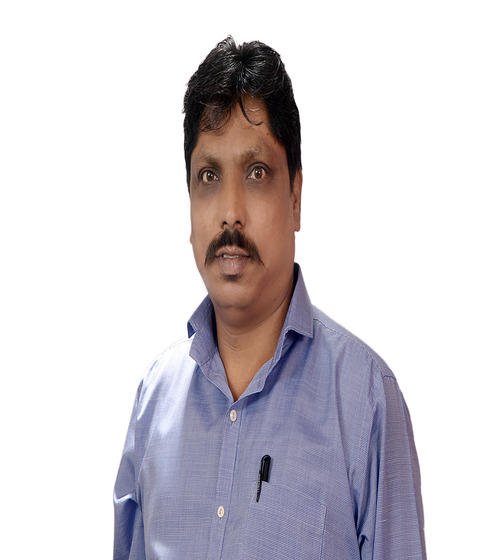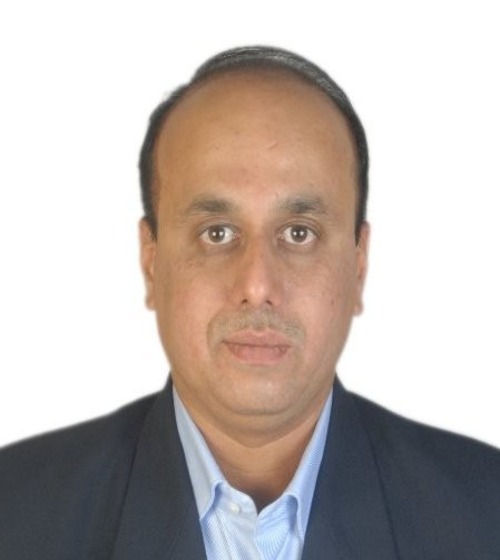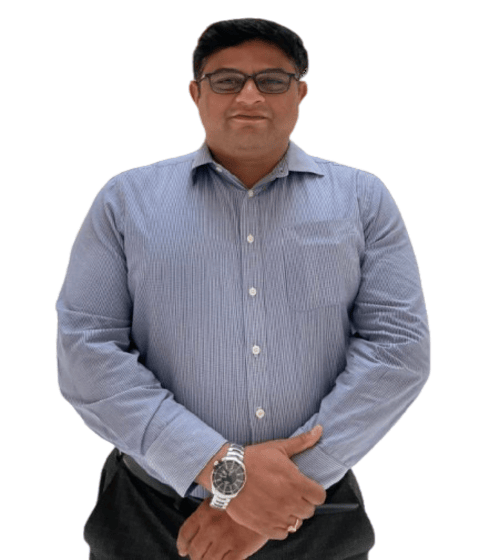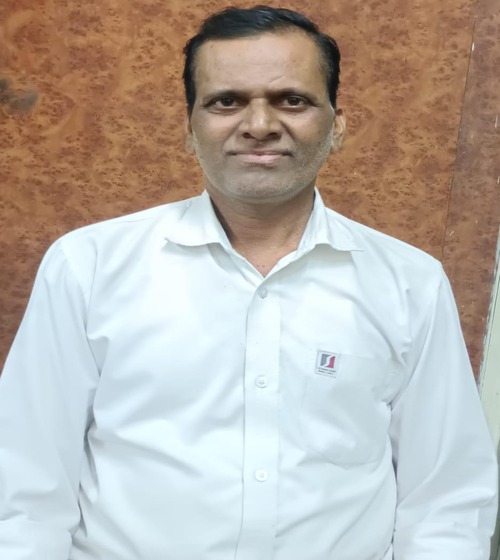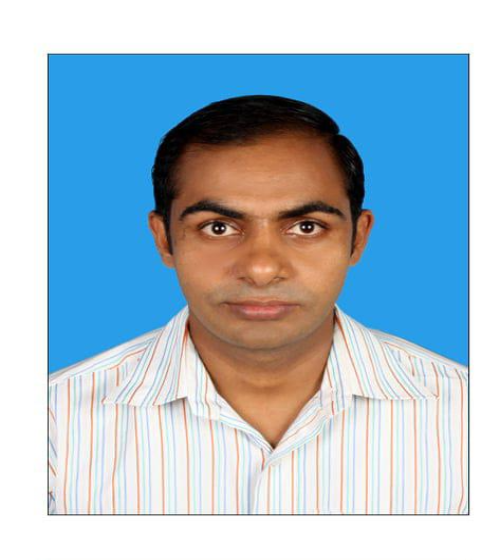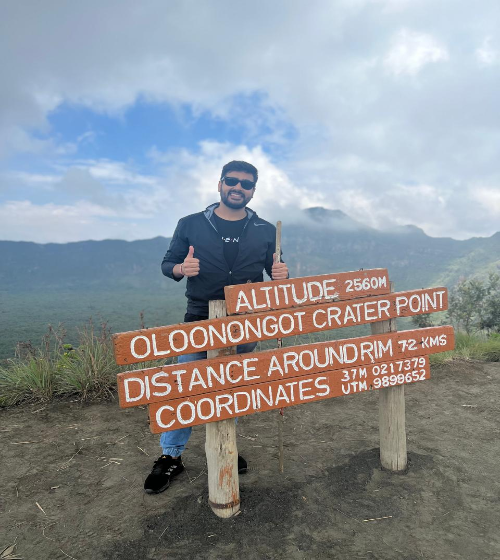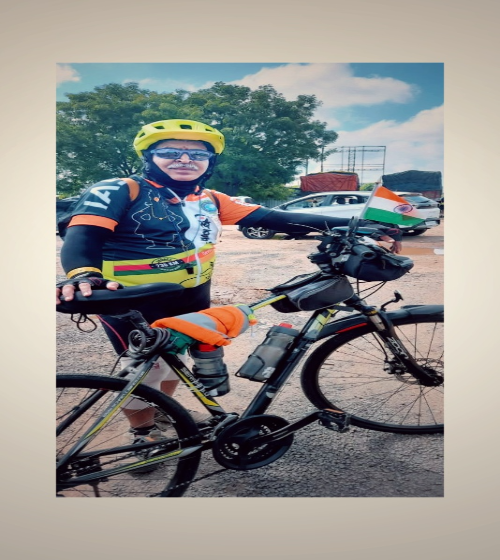In a country where societal norms often emphasise the importance of having an heir for property inheritance, Ratan Tata’s stance sends a powerful message. Despite his vast wealth, he never felt the need to name an heir, defying traditional expectations and exemplifying a selfless approach to leadership.
The Tata legacy dates back to 1822 when Nusserwanji Tata was born into a Parsi priest family that had settled in Gujarat. At the age of 20, Nusserwanji moved to Mumbai and skillfully began trading cotton. He soon expanded into cotton exports and reinvested all his profits into the business and his children’s education, recognising the importance of knowledge. In 1859, he sent his son Jamsetji Tata to Hong Kong for education and business training.
Jamsetji Tata was exceptionally talented and joined his father’s cotton trading business. When the American Civil War broke out in 1861, Jamsetji capitalised on the opportunity by exporting cotton to London at double the price. Before this, American traders supplied cotton to England. However, when America stabilised postwar, England resumed importing from the U.S., placing Jamsetji in a difficult situation. To repay his investors, he had to sell his house. But like a phoenix, he rose again, venturing into cotton manufacturing. He established India’s first cotton mill in Nagpur, named Empress Cotton Mill. The workers in the mill were initially complacent, so Jamsetji introduced pension schemes, provident funds, group insurance, and family gatherings, which significantly improved their morale and productivity. In 1903, he founded the Taj Hotel in Mumbai, becoming India’s first five-star hotel with electricity. In 1907, Jamsetji launched India’s first steel plant in Mayurbhanj through a public issue, which received overwhelming support from nearly 8,000 investors. During World War I, this plant supplied steel to England. By 1914, the Tata Group had expanded to 14 companies worldwide. Jamsetji had two sons, Dorabji and Ratanji Tata. After Ratanji’s demise, Ratanji’s widow, Navajbai Tata adopted a boy from a Parsi orphanage, naming him Naval Tata. Dorabji Tata managed the Tata Group after Jamsetji’s passing. He led the group until 1938, when the chairmanship passed to J.R.D. (Jahangir Ratanji Dadabhoy) Tata (a scion from a different branch of the Tata family), who went on to lead the company for 52 years. Under his leadership, the Tata Group grew tremendously, producing India’s first locomotives and founding TCS, which became the second-largest employer in the country. He also established Tata Airlines and built hydroelectric power plants. However, government’s nationalisation policies later turned Tata Airlines into Indian Airlines.
J.R.D. Tata famously said, “Business is not only for profit but for nationbuilding.”
Naval Tata, the adopted son, had two children: Ratan Tata and Jimmy Tata. When Ratan was 10, Naval separated from his wife and remarried, having a son named Noel Tata. Ratan was raised by his grandmother Navajbai Tata. He studied at Cathedral and John Connon School in Mumbai and later pursued higher education at Cornell University, earning a degree in Architecture. He completed advanced management studies at Harvard Business School and briefly worked in the U.S.
On J.R.D.’s encouragement, Ratan returned to India and joined the Tata Group. His initial task was to revive the struggling NELCO (Tata Group’s pioneering integrated security and satellite solutions provider), which he managed to increase from a 2% to 20% market share. However, labour strikes in 1977 forced the company to shut down. Ratan was then tasked with reviving the Empress Cotton Mill, but the 1969 Monopolies and Restrictive Trade Practices Act posed challenges for the group. J.R.D. recognised Ratan’s dedication, passion, skills, and visionary leadership, naming him as his successor despite opposition from others.
On March 25, 1991, Ratan Tata became Chairman. Around this time, Prime Minister P. V. Narasimha Rao and Finance Minister Manmohan Singh announced economic liberalisation, opening India’s market to the world, transitioning from a socialist to a capitalist model. Ratan Tata took a decisive step that contrasted sharply with the decentralised approach of J.R.D. Tata’s leadership. While J.R.D. Tata maintained a structure where individual Tata companies operated with considerable autonomy, Ratan Tata began consolidating ownership by increasing Tata Sons’ stake in key companies. This strategic shift enabled him to embark on acquiring international brands, transforming Tata Group into a global powerhouse. Under his leadership, Tata acquired globally recognised brands such as Tetley, Jaguar Land Rover, and Corus, thus globalising the Tata Group. By then, the Tata Group was expanding rapidly, with the number of companies within the conglomerate steadily increasing.
Ratan Tata had always been deeply aware of the issues faced by India’s poor and middle class. The Tata Group, under his guidance, focussed on sectors such as education and health. Notably, J.R.D. Tata had established India’s first free cancer research and treatment centre in Mumbai. Building on this legacy, Ratan Tata spearheaded the creation of cancer research centres and hospitals in Varanasi, Muzaffarpur, and Kolkata.
Among all the Tata companies, Tata Motors was especially close to Ratan Tata’s heart. In 1998, he took on the ambitious project of launching the Tata Indica, investing significant amounts in setting up a dedicated plant. However, the car initially struggled in the market, leading to substantial losses for Tata Motors. Members of the board advised Ratan Tata to sell the plant, a suggestion he initially agreed to, and he travelled to the U.S. to negotiate with Ford. During discussions, Ford’s chairman Bill Ford made a disparaging remark, asking, “Why did you invest in a business you had no expertise in?” This statement deeply affected Ratan Tata, who promptly cancelled the sale and returned to India. Determined, he focussed on improving the Indica, which was re-launched successfully, earning widespread acclaim.
A similar challenge arose with the Tata Sumo. After selling about 5,000 units, customers reported gearbox issues. To uphold the brand’s reputation, Ratan Tata decided to recall all 5,000 cars at the company’s expense, repair them, and return them to the customers. This commitment to quality and service brought significant success to Tata Motors.
In the 1980s, one of Tata’s factories faced threats from a group of 100-200 hired goons who aimed to take control of the workers’ union. Despite being advised by his staff to leave for safety reasons, Ratan Tata believed that conceding to such demands would set a dangerous precedent. He stayed with the workers to show solidarity until police action restored order.
Ratan Tata regarded every employee of the Tata Group as part of his family, a value he consistently upheld. On one occasion, while in Pune, the Managing Director of a local factory fell seriously ill and needed to be moved to Mumbai. With it being a Sunday, no air ambulance was available. Ratan Tata, a licensed pilot like J.R.D. Tata, prepared to fly the MD himself. However, during this time, his staff managed to arrange an air ambulance, and the MD was safely transferred to Mumbai and recovered well.
Ironically, years later, when Ford faced financial difficulties and neared bankruptcy, Ratan Tata expressed interest in acquiring the company and invited Bill Ford to Mumbai for discussions. Ratan Tata treated him with utmost respect, never mentioning Ford’s earlier insult. At the conclusion of the deal, Bill Ford acknowledged the gesture by saying, “You are doing us a big favour by buying our company.” Instead of taking revenge, Ratan Tata assured Ford that the acquired brands would retain their identity and that the Tata name would not overshadow them.
While expanding the Tata Group globally, Ratan Tata continued to focus on social initiatives. He allocated 66% of Tata Sons’ profits to Tata Trusts, emphasising that fulfiling social responsibility was an integral part of the business.
Ratan Tata’s love for animals, particularly dogs, was well-known. His generosity earned recognition when Queen Elizabeth and Prince Charles wanted to honour him with a Lifetime Achievement Award. Despite the elaborate arrangements, Ratan Tata politely declined to attend, explaining to Prince Charles that his pet dog was unwell and needed him. Prince Charles later revealed this story during an interview, highlighting Tata’s compassionate nature. In Mumbai, Ratan Tata established a 24/7, state-of-the-art animal hospital with 200 beds, ICU facilities, surgical services, pharmacy, radiology, and pathology labs.
Living in Colaba, Mumbai, Ratan Tata led a simple life, his humility and genuine personality made him an icon of inspiration for millions.
Whenever Ratan Tata was near the Taj Hotel and needed to have lunch, he would not go to the Taj Hotel but to a nearby fast food shop for his meal. Many times, Ratan Tata would drive his car himself.
Ratan Tata never forgot the grassroot customers. In 2003, he noticed that a common man, with his wife and two children, often travelled on a single scooter or motorcycle. To provide such families with an affordable car, he envisioned and announced the plan for the Tata Nano, a low-cost car. He began the process to set up the Tata Nano car plant in Singur, West Bengal. However, due to certain issues, he had to consider relocating the plant to other states. During this time, the Gujarat government approached Ratan Tata with a proposal in the Taj Hotel itself, offering several sites and all necessary approvals for the Tata Nano plant. Accepting the offer, Ratan Tata conducted aerial inspections of the sites and finalised one to establish the Tata Nano plant. Despite this, the entire process took five years, and the manufacturing cost of the car, initially promised at one lakh rupees, began to rise. During the delay, competitors launched budget cars into the market.
When the Tata Nano finally launched, it did not receive the expected response. This could partly be attributed to a failure in the marketing strategy. Despite these challenges, Ratan Tata fulfilled his promise to provide an affordable car at one lakh rupees.
Everyone knows about the terrorist attack on Mumbai on November 26, 2008, which claimed 166 lives and left many others permanently injured. Among the locations targeted, two terrorists took control of the Tata Group’s Taj Hotel, resulting in 31 casualties and severe damage to the property. After the attack, Ratan Tata visited the staff, inquired about their well-being, and took responsibility for the families of those who had lost their lives, including the education of their children. He also extended help to neighbouring business owners affected by the attack. Ratan Tata went on to renovate the Taj Hotel and other properties under the Taj Group to an even better state.
In 2019, when Covid-19 struck India, Ratan Tata donated Rs. 1,500 crore for treatment efforts. Additionally, he provided over 1,000 ventilators, respirators, 400,000 PPE kits, 3.5 million masks, hand gloves, and 3,50,000 testing kits to the government. In 2014, he donated Rs. 95 million to IIT Bombay to support research and innovation. He also contributed 50 million dollars to Cornell University to facilitate Indian students studying there and 50 million dollars to Harvard Business School. He established the Tata Innovation Fund to support new entrepreneurs and initiated scholarships for students. Under his leadership, the Tata Group’s globalisation benefitted thousands of small entrepreneurs dependent on its factories, creating millions of jobs and quality educational opportunities. He provided loans of up to 10 lakh rupees over seven years through the Tata Innovation Fellowship. In 2010, he contributed Rs. 210 crore for a cancer research and treatment centre in Kolkata. The list of his contributions is extensive.
From 1892 to 2021, the Tata Group donated 102.4 billion dollars. During his tenure, Ratan Tata also succeeded in bringing back Indian Airlines, once known as Tata Airlines, into the Tata Group.
Ratan Tata served as Chairman of the Tata Group from 1991 to 2012 and as Interim Chairman from October 2016 to February 2017. In 2000, the Government of India honoured him with the Padma Bhushan, and in 2008, with the Padma Vibhushan. He was also awarded the Maharashtra Bhushan, the highest honour from the Maharashtra government, and the Assam Vaibhav by the Assam government. Various other nations also recognised him with prestigious awards.
Today, numerous products we use daily are made by companies under the Tata Group and Tata Sons. While many possess wealth, few have the heart to give back to society as Ratan Tata did.
Ratan Tata, born on December 28, 1937, passed away on October 9, 2024, at Breach Candy Hospital in Mumbai. His funeral was conducted with state honours. One regret shared by me and many Indians is that we could not award him the highest civilian honour, the Bharat Ratna, during his lifetime.
A heartfelt tribute to this towering personality!
*References: Multiple sources from the web
Shantaram Borhade
Mechanical Draftsman P&ES MPP,
Sai Chambers, Pune
Archives: Employee Stories
Pedalling through the Heartland – 500 km Pune to Shegaon
Our cycling group planned an expedition to Shegaon, covering about 500 km in three days from November 29 – December 1, 2024. Although the trip was planned well in advance, I couldn’t participate in the practice rides due to other commitments. This left me uncertain about joining the expedition. However, I finally decided to give it my all and complete the ride.
Day 1: Pune to Devgad (206 km)
On November 29, I started at 3:00 am, and our group of eight cyclists began our journey from Gajanan Maharaj Math at Saharkar Nagar at 4:30 am. Unfortunately, within the first 10 km, my friend’s cycle got punctured, and it happened again in the evening, costing us an hour. Despite this, we reached Devgad around 8:30 pm, covering 206 km on the first day.
Day 2: Devgad to Deulgaon Raja (145 km)
We woke up early, had darshan at Datta Mandir, and resumed our journey. We started late and reached Jalana by 6:00 pm With another 30 km to go, we were quite tired. The last stretch was challenging due to the darkness and constant uphill climb, but we finally reached Deulgaon Raja around 8:00 pm after a 145 km ride. We enjoyed a good dinner and relaxed with friends.
Day 3: Deulgaon Raja to Shegaon (140 km)
The final day was crucial as we needed to reach Shegaon on time. We started at 5:30 am and arrived in Shegaon by 5:00 pm, covering 140 km. We first enjoyed the famous ‘kachori’ and then loaded our cycles into a hired tempo to send them back to Pune. After freshening up and having darshan, we quickly finished our dinner and caught our Purple sleeper coach bus at 9:30 pm The journey back was much more comfortable, especially after such an exhausting ride, and we reached Pune at 8:00 am on December 2, 2024.
This was my longest ride to date, and the challenges we faced made the experience all the more rewarding. Cycling in cold mornings and enduring hot afternoons taught me patience and perseverance. Regular breaks every 20 km helped us pace ourselves, and timely meals kept us fuelled. My cycling friends, including a few inspiring individuals over 60 who maintain their fitness through daily practice, proved that age is no barrier to staying active.
I have been cycling for six years and have learned that taking at least one hour for yourself and investing the same in exercising daily is essential. Last year, I even completed three half-marathons, adding to my journey of self discipline and fitness.
Be determined, stay consistent, and keep moving toward your goals. No matter how tough the road gets, perseverance and teamwork can lead you to the finish line.
Here’s to more adventures and the friendships that make every ride unforgettable!
Sandeep Mandke
Head – Group Treasury & Enterprise Risk Management, Finance,
Thermax House, Pune
Be a Corporate Tiger!
The Tiger’s Roar: Lessons from Forests and Teams
“Do not cut down that forest with its tigers! Let not the tigers be driven from that forest! There can be no forest without tigers, and no tigers without a forest. The forest shelters the tigers, and the tigers guard the forest!” — Mahabharata
This ancient wisdom reflects the symbiotic relationship between tigers and their natural habitats. Just as forests thrive with the presence of tigers, organisations too can harness the metaphorical strength of these majestic creatures by forming “tiger teams”—small, specialised groups that deliver swift, strategic solutions to complex challenges.
India’s Tigers: A Legacy of Growth
India’s tiger population has been a beacon of conservation success. Rising from 2,967 in 2018 to 3,682 in 2022, this growth speaks to the resilience of our ecosystems and the collaborative efforts to preserve them. These apex predators have roamed Indian forests for over 12,000 years, showcasing strength, adaptability, and an unyielding spirit—qualities that tiger teams embody in organisations today.
What is a Tiger Team?
A tiger team is a task force of experts from various fields, brought together to solve critical problems or seize high-impact opportunities. These teams, much like their namesake, are agile, powerful, and focussed. They operate outside the constraints of traditional hierarchies, fostering innovation through crossfunctional collaboration.
The Tiger in Action: Real-World Examples
Several organisations have successfully deployed tiger teams to navigate challenges:
•NASA’s Apollo 13 Mission: Experts swiftly designed solutions to save astronauts in a life-threatening crisis.
• Google’s Project Aristotle: Tiger teams identified key factors for successful teamwork, enhancing collaboration across the company.
• Apple’s Product Development: Agile tiger teams consistently deliver cutting-edge innovations.
• Ford’s GT Supercar Project: A focussed team of engineers and designers rapidly developed a high-performance vehicle.
These examples demonstrate how tiger teams can combine expertise, speed, and creativity to achieve exceptional results.
Harnessing the Tiger Team’s Strength
Drawing parallels to the tiger’s attributes, tiger teams thrive on:
• Strength and Power: Members bring robust skills to tackle challenges head-on.
• Agility: Just as tigers adapt to their environment, these teams pivot strategies to meet evolving needs.
• Focussed Teamwork: Small and purpose-driven, they ensure efficient problemsolving.
• Strategic Leadership: Like a tiger leading its territory, effective leaders guide these teams to success.
The Forest and the Tiger: A Call to Action
The lesson from the Mahabharata is timeless:
Balance and interdependence drive sustainability. For organisations, this means nurturing innovation (the forest) while empowering their people (the tigers). Forming tiger teams can be a transformative approach to navigating today’s fast-paced, complex challenges.
When we unleash the power of a tiger team, we channel the essence of the tiger—bold, agile, and purposeful—into our pursuits. Let us guard our forests, both literal and metaphorical, ensuring that our tigers, whether in nature or in organisations, continue to roar.
Saurabh Kekre
Deputy Manager – Domestic Sales,
P&ES MPP, Sai Chambers, Pune
A Serving of Joy – Lessons from a Street Stall
After a rather good day at work, I decided to treat myself that evening.
I stopped at a new pani-poori stall on my way home. It was owned by a woman in her late 50s, dressed in a salwar kameez, her hair tied in a bun. She greeted me warmly, handed me a plate, and asked, “Regular or spicy?” “Spicy,” I said. She smiled knowingly as if she understood the thrill of spicy food.
There was an instant connection. One pani-poori after another, my eyes began to water. “Regular now?” she asked, and I nodded. She sweetened the next two, then added a couple of extra dry pooris. The gesture made me smile.
As I reached for my wallet, we heard a phone ring. It turned out we shared the same ringtone. While I took my work call, she waited. When I hung up, she asked in fluent English, “Work never really stops, does it?”
It caught me by surprise. Her polished English didn’t match the image I had unconsciously formed in my mind. It made me recall my DEI lessons on how not to judge and assume!
Curious, I asked, “If you don’t mind me asking, do you do anything else apart from running this stall?”
What she said next left me stunned: “Oh, I run this stall purely because I enjoy it. I’m actually a business lawyer.”
My mouth dropped open. She noticed and added, “I love cooking. It’s my passion. There’s no greater joy than spending time doing something you truly love.”
Again, assuming she needed extra income, I said, “I really admire your hard work. You must be exhausted by the time the day ends.”
She smiled. “I don’t do this primarily for money—I do it for fun! Money is just a by-product. Fun doesn’t exhaust me. I finish my official work by 6:00 in the evening and run the stall till 9:00. It’s enjoyable, and I earn enough to spoil myself a little.”
She continued, “It’s also a stress buster. Engaging in something simpler helps me clear my mind. It gives a whole new perspective towards life, you know. My daughter, who is currently interning in a software company, also joins me on some days.”
I was awestruck. What a woman! What an evening!
“That’s so cool,” I said happily. “I have to get a picture with you!”, I added. She clicked a selfie, and that photo remains a cherished memory.
Since then, I’ve visited her stall often. As much as I enjoy the pani-pooris, I enjoy conversations with her and her daughter even more. She’s a friend I made over food and is an inspiration.
She made me believe that if you’re not having fun, then something’s wrong. We don’t stop having fun because we grow old. Instead, we grow old because we stop having fun.
Here’s to meaningful connections and more!
Neha Wagh,
L&D Manager
Thermax House, Pune
A Life Steeped in Dedication and Dreams
Life has a strange way of unfolding. You think you are heading in one direction, and suddenly, you find yourself somewhere entirely different—somewhere you never planned for, but somehow, it feels right. I was born in Amravati and raised in Pune, the youngest of six siblings. Ours wasn’t an easy childhood. I lost my parents when I was in the 10th grade, a loss that left a quiet, heavy space in my heart—one that never fully went away but I learned to move on gracefully. After all, for how long can one feel the same emotion? I had responsibilities to take up and I had to look after myself. So, I grew up quickly, learning to make my way in a world that never really pauses for anyone.
I studied until the 12th grade at Sanghvi Kesari College, but books soon made way for work. My journey took me to places I had never imagined—hotels in Goa, Baramati, Ooty, and Pune. From Mirchi Masala in Kothrud to Poona Gate Hotel, I worked in the service line in the hotel industry. It was a life of movement, of new cities and unfamiliar streets, of constantly learning and unlearning. But no matter where I went, there was always something missing. I wanted stability. A place to belong. That place came unexpectedly, through a friend who told me about a vacancy at Thermax’s Chinchwad factory. I didn’t know then that I would stay for 17 years. But looking back, it makes sense. Life may not always give you what you ask for, but it often gives you what you need.
My days begin early. By 7:30 am, I am at work, setting up the serving area at canteen in Thermax Learning Academy (TLA), making sure everything is ready before people start coming in. Tea, coffee, conversations— small moments that may seem ordinary but hold their own quiet significance. Over the years, I have learned that people find comfort in the simplest things. A familiar face. A warm cup of tea. A place where they can pause, even if just for a minute and serving those moments with serving their favourite beverage is a good thing to do.
Beyond work, my life is built around my family. I have two daughters, and they are my biggest source of pride. My eldest is in her second year of Bachelor’s in Computer Science, and my younger one is in the 9th grade at a CBSE school. Both of them excel in their studies, topping their classes without any tuition. I often tell them, I couldn’t study beyond 12th grade, but I want them to have every opportunity I didn’t.
I saved for years to build our home in Indori, beyond Dehugaon. It stands as proof of everything I have worked for—a space of our own, a place where my daughters can dream freely. Last year, we celebrated Diwali in a house owned by us. A house that we call home now and I couldn’t have asked for more.
The toughest times often show you who truly cares. In 2020, when Covid struck, I fell sick. I was in the hospital for seven days, isolated, while my family managed on their own. My neighbours and even my landlord kept their distance. Fear does that to people. But amidst the loneliness, there were moments of kindness too. My friend Dashrath stepped up, offering help when I needed it most. Even now, thinking about it, I am reminded that no matter how unpredictable life is, there is always goodness to be found.
Through every loss, every struggle, and every quiet triumph, life has taught me one simple truth—it never stands still. And neither can we. I don’t know what tomorrow holds, but I do know what I want— to watch my daughters chase their dreams, to see them build lives filled with purpose and pride. The road hasn’t always been smooth, but I’ve never turned away from hard work. Time, effort, and perseverance—these are the lessons I live by and the ones I pass on to them. Until then, I will do what I have always done—take each day as it comes and make it matter.
Ravindra Bonde
Service Boy,
Thermax Learning Academy, Chinchwad
27 Years of Hospitality: A Journey of People, Places, and Purpose
My name is Yadap Kumar Pandey, and I hail from Nepal. I came to India when I was just 18, with dreams of exploring new horizons and making a life for myself. After completing the 12th grade, a close friend of mine mentioned an opening for a caretaker position at a guest house in Pune called Zahr Palace for Thermax. Encouraged by his suggestion, I applied for the role, and after an interview with R. N. Doctor, I was selected. That was 27 years ago, and since then, Thermax has been my home.
This job was my first, and as I look back, I realise how much it has shaped me. I’m 44 years old now, and over the years, my excitement to meet new people and learn new things has never waned. The environment at Thermax has always been warm and welcoming, with colleagues who treat each other with kindness and respect. I never felt like I was just doing a job; I felt like I was part of something larger, something meaningful.
In my role as a caretaker, I’ve had the privilege of meeting people from different states and countries, each with their own unique stories and personalities. Over time, I learned how to manage different behaviours and adapt to the needs of our guests. What’s special about this experience is that it never felt like work; there was never any pressure. Instead, it was an opportunity to connect with others, to learn from them, and to share my own experiences.
My journey with Thermax has taken me across various cities – Pune, Bengaluru, Mumbai, Vadodara, Ooty, and for the past 24 years, Chennai has been my home. I’ve witnessed the company evolve, seen four managing directors, and experienced many changes in the Customer Relationship Management (CRM) department. I’ve had the chance to meet everyone, from the chairperson, EC members to employees from all walks of life. Each interaction has been memorable, with everyone taking the time to inquire about my family and work. Their appreciation for what I do has always been a source of motivation for me.
When I joined, Anu Aga was the Chairperson, and the MDs I’ve worked under include Abhay Nalawade, P. M. Kulkarni, M. S. Unnikrishnan, and now Ashish Bhandari. I’ve been inspired by each of them, particularly by Ashish Sir and Unni Sir. Despite holding such high positions, they never made me feel like there was a gap between us. Their humility and down-toearth personalities make everyone around them feel comfortable.
Chennai holds a special place in my heart. The city’s culture, the people, and the local traditions have become a part of me. I love sharing what I’ve learned with others, and one of my closest friends, Shiva Bashyal, works at the Chairman’s house in the Mumbai guest house. We’ve shared countless stories, and through my travels, I’ve picked up the skills to cook various dishes from different regions. I remember initially learning to cook by following recipes from newspapers, adding my own twist to create something unique.
The world has changed so much since I started in the 90s. Back then, people were eager to talk and connect with each other. Today, everyone seems more absorbed in their phones. I often encourage employees who stay at the guest house to leave their phones behind during meals, to truly engage with one another.
The pandemic was a challenging time for all of us. During the lockdown, I stayed at the guest house with four others. We supported each other in every way we could, delivering food to rooms without physical contact. The experience was a profound life lesson, teaching us all the importance of resilience and community.
I’m married and have a son who is pursuing engineering in Chennai. There are times when I miss my family, especially since I only get to see them twice a year. Responsibility, however, is something I’ve come to accept. It’s hard when someone back home is unwell and I can’t be there, but when I can, I make sure to do everything I can to take care of them.
Staying positive in life is essential, and I believe that kindness and a willingness to listen go a long way. Whenever I’m stressed, I focus on finding solutions rather than dwelling on problems. After 27 years with Thermax, I’ve learned that hard work and dedication are key to achieving anything worthwhile. No field of work is big or small; it’s our perspective and determination that make all the difference.
I look forward to continuing my journey, meeting new people, and sharing my experiences. My passion for understanding others, caring for them, and making them feel at home is what I love most about my role. My father, who was diagnosed with cancer, taught me the importance of hope, discipline, and perseverance. At 87, he remains a pillar of strength, embodying the very qualities that have guided me through my life.
As I continue to serve in my role, I carry with me the lessons of a lifetime – a deep respect for the power of human connection, the value of kindness, and the belief that no matter where we are, we can always make a difference.
Yadap Kumar Pandey Caretaker, Chennai Guest House
Turning Challenges into Opportunities: The African Experience
Africa is often viewed through a lens of challenges – climate change, safety issues, political instability, and economic hurdles. However, beneath these surfacelevel issues lies a continent teeming with resilience, innovation, and untapped potential. One story that exemplifies this is that of William Kamkwamba, a young boy from Malawi whose ingenuity turned adversity into opportunity.
Born into a poor farming family, William faced a severe famine in the mid-2000s that interrupted his education and threatened his community’s survival. Refusing to succumb to despair, he found hope in old library books and scrap materials around the village. With these limited resources, he constructed a windmill, generating electricity for his family’s home and becoming a symbol of what is possible even in the face of daunting challenges. This inspiring tale, featured in the Netflix film – “The Boy Who Harnessed the Wind”, reflects the broader narrative of Africa – a land of innovation and potential.
William’s story is not an isolated incident but part of a broader narrative unfolding across Africa – a continent often misunderstood and underestimated. With a landmass surpassing China, India, the U.S., Japan, and much of Europe combined, Africa is a rapidly urbanising region on the cusp of having the world’s largest workforce. Despite significant challenges, the continent is brimming with untapped potential and opportunities.
Booming Industries and Economic Potential
Africa’s food and beverage (F&B) industry is a powerhouse of growth, driven by a growing population and an expanding middle class. Projected to grow at a CAGR of 9.5% from 2022 to 2027, the sector offers vast opportunities. Nigeria, for example, hosts some of the continent’s largest food and beverage companies, producing goods for both local consumption and export.
Africa is also a treasure trove of renewable energy resources, boasting the world’s largest untapped reserves. The continent’s abundant sunlight, wind corridors, and widely available biomass present vast opportunities for growth:
Solar Power: With up to 12 hours of sunshine daily, Africa’s solar capacity was approximately 11 GW in 2023, with significant expansion anticipated. Countries like Egypt and South Africa are leading the charge with large-scale solar projects.
Wind Energy: Kenya’s Turkana wind farm, the largest in Africa, provides substantial power to the national grid, demonstrating the continent’s potential in harnessing wind energy.
Biomass Energy: Africa’s biomass capacity exceeds 16 GW, utilising agricultural and forestry residues. Kenya and Ghana are at the forefront of this clean energy revolution.
Africa’s energy landscape is a complex yet promising tapestry. The demand for reliable, efficient, and sustainable energy solutions offers Thermax a unique opportunity to make a substantial impact. In East Africa, where biomass is widely available, Thermax is at the forefront of providing a variety of biomass-based energy solutions, powering over 350+ plants in and around Kenya.
The pressing need for sustainable solutions presents a chance to pioneer groundbreaking projects and collaborate with local communities for lasting impact. One such example is Thermax’s involvement in a small captive power plant in eastern Kenya, using sisal waste to generate green energy. This plant not only powers farm machinery and irrigation systems but also supports the client in mining cryptocurrency – an innovative use of resources in a remote African village!
While East Africa benefits from a wide availability of biomass, fuel availability and power scenarios vary across different geographies within Africa. Power availability remains a critical challenge in some West African countries, stifling industrial growth. However, these challenges are not deterrents but catalysts for innovation and change.
To ensure continuity in operations across Nigeria, many customers have switched to gas engines for powering their factories. Thermax has revolutionised the market by providing waste heat-based cooling solutions, with over 60+ chillers tackling waste heat from gas engines and generating cooling solutions across industries.
Today, Thermax has installed over 400+ biomass boilers and approximately 200+ oil and gas boilers across Africa, serving diverse industries. This extensive footprint underscores the effectiveness of our solutions in meeting the continent’s energy needs while minimising environmental impact.
Creating a Meaningful Impact
As the team leading Thermax’s business in Africa, we see firsthand challenges and opportunities that this dynamic region offers. Our Sub-Saharan Africa (SSA) team, comprising a blend of locals and expatriates, is navigating Africa’s unique challenges and fostering valuable partnerships. By embracing a mindset of potential and innovation, I believe, we, at Thermax can turn every obstacle into a stepping stone for progress, creating a brighter future for all.
In this endeavour, I would like to request the support of our colleagues across divisions to share their insights and collaborate to give impetus to the business in the region and turn our vision into reality.
Cycling to Pandharpur: A journey of perseverance and passion
Participating in the Pandharpur wari on a cycle is a testament to one’s endurance, determination, and love for both cycling and tradition. On 15th June 2024, I began my exciting journey, cycling 235 kilometers in just one day. This experience was both challenging and thrilling, marking my second attempt after a solo ride in 2022.
I registered for the event with the IAS (Indo Athletic Society), an institution dedicated to promoting cycling and environmental awareness. The registrations closed in February 2024, giving us ample time to prepare. My daily practice included cycling 30 km each morning, gradually increasing to longer distances and higher speeds. By the time the event day arrived, I could maintain a speed of 20-22 km/hr
The Day
The day began early, at 2:30 am, as I left home to join the flag-off at 3:15 am. From the beginning, I found my rhythm, completing the first 50 km in a record time of 2 hours and 10 minutes without any need of hydration. The organisers had arranged a hydration break, which was much appreciated.
At 5:30 am, we refuelled with hot upma, tea, and bananas, and rode with a refreshed feeling, ready to tackle the next stretch. The first 100 km took us through challenging terrains like Hadapsar, Yavat, Patas, and Kurkumbh. Despite these hurdles, I maintained proper hydration and crossed this segment swiftly, completing it in 4 hours and 30 minutes.
The most challenging part of the ride was the 41 km stretch from Bhigwan to Indapur. The hot midday sun tested our limits, but thanks to the well-organised hydration breaks, we managed to push through. By 12:00 pm, I reached Indapur, where a delicious lunch awaited us. After a much-needed rest, we had 80 km left to complete.
Setting off at 1:00 pm for the final leg, the first 40 km to Pandharpur flew by. However, the last 40 km presented a surprise challenge: heavy headwinds that slowed our pace and tested our resilience. Despite the obstacles, we persevered, reaching the destination at 4:30 pm.
Completing this journey was an exhilarating achievement, filled with joy and a sense of accomplishment. This ride was particularly meaningful for me, as I had overcome a significant accident the previous year, which required surgery and six months of physiotherapy. This successful ride reaffirmed my love for cycling and my determination. After worshipping Lord Vitthal and Goddess Rakhumai at Pandharpur, it felt like all the stress and fatigue had vanished and I was more than energised to fulfil the rest of my ever-increasing bucket list!
The support from my family, the encouragement of my cycling partners, and consistent practice were crucial to my success. A Marathi saying goes as below – “आम्हीी बीी घडलोो, तुुम्हीी बीी घडाानाा एकदाा तरीी साायकलवाारीी कराानाा… जय रााम कृृ ष्ण हरीी!” which translates to – “We transformed, you should too, at least once, do the cycle pilgrimage… Hail Lord Ram and Krishna!”
For me and my family, this journey was not just about completing a ride but about celebrating resilience, passion, and the joy of achieving something truly remarkable. The entire event ended with medal distribution and appreciating the commendable teamwork of the organisers!
– Ravindra Honrao Draughtsman – Mechanical, P&ES
Making Our Community Paw-fect!
Our factory is an extension of our home and, therefore, an extension of our values. One year ago, as I was walking down the factory to Eco House, I noticed stray dogs wandering through the facility neglected, seeking refuge, food and a friendly hand. Having always been an animal lover, I began brainstorming on how we could help create a more compassionate workspace where the welfare of these stray dogs becomes intertwined with the heart of our culture as a company. As many companies are taking steps to make a positive impact on the lives of these furry friends, it is our responsibility to do the same. So, what are the benefits of helping these stray dogs in our factories? And what steps are we taking to create a safer, more compassionate environment for both employees and the local canine community?
Safety First: Most of the dogs in our factory have been spayed and given their rabies shots. However, there are some which still require spaying and vaccinations so that we can prevent accidents and help control the population. We will be working with local NGOs to help with this initiative. We will also be tagging all of our dogs so that we know they belong to our facility.
Food & Shelter: Most of the dogs are now being fed twice a day from the waste of our canteen food, such as chapatis, rice, bread and milk. They will be fed in designated feeding spots which will help keep their presence only in certain areas. This provides a self-sustaining model for the community.
Employee Awareness: As you walk around the factory, look out for posters which will help you understand the stray community better. A few employees who have been instrumental in helping with the feeding and building trust with the dogs are Pravin Wagh, Ganesh Koli, Sanjay Hiwale, Yogesh Sapkale, Mukunda Helode and Vijay Siyak.
Next time you are at the factory, please say hi and speak to them about their experiences. I believe that a corporate culture that extends compassion to animals creates a positive and empathetic atmosphere. A controlled and healthier canine community also contributes to a cleaner and safer environment for all. Helping stray dogs in our factories is not just an act of kindness; it’s a demonstration of corporate responsibility. If anyone has any questions or comes across a stray in our factory that might need our help, please reach out. Since this is just the beginning, we look forward to a more comprehensive support system for our canine friends around the community.
Creating a paw-sitive workplace will benefit us all!
-Lea Pudumjee, Product Manager,
Heating, Eco House, Chinchwad
Thermax Cannot Get Out of Us
Gopal Gureja, Author and Ex-Thermaxian shares an interesting anecdote through this speech note, a part of which was addressed to the audience at a get-together of the Wanson-Thermax Ex-Employees Association. The event was held at the Poona Club in November 2023, where about 130 ex-employees had participated.
Hello Everybody! Looking at the kind of attendance and the fervour with which the old colleagues are meeting here today, it is quite obvious that whether we went out of Thermax on retirement or to grab another opportunity, Thermax has certainly not gone out of us.
You would all agree that one strong reason for our emotional engagement was the kind of work culture that the company provided us. Based on the primal values steeped in humility, openness, transparency, respect for human beings and unstinted customer commitment, it allowed us freedom of action, encouraged informed dissent and welcomed well-considered initiatives. Some of you perhaps recall the ‘Welcome to Wanson/Thermax’ letter.
We have three former CEOs with us – M. S. Unnikrishnan, Abhay Nalawade and Prakash Kulkarni who, in their own distinctive style, substantially added to the company’s growth. But I am sure they also benefitted from the company’s culture to hone their leadership skills to rise to the top position. In their own way, they ensured that the fundamental aspects of company culture that enhance employee emotional engagement were kept intact.
Some of you have gone into your own business and done well, while others are in senior positions in their new jobs. Wish you all the best in your endeavours. Also, many thanks to the core team that has made this grand get-together possible with considerable hard work and tenacity.
Let me tell you about an unnerving experience for a newly joined service manager.
Within three weeks of my joining the company, way back in 1970, I was required to get an endorsement from R. D. Aga of my plan of action before presenting it at the sales conference coming up in the following week. I was at my desk, trying to arrange my thoughts, when the Managing Director, Mr. Bhathena, joined me at my desk to have a ‘chat’ with me. He told me about the famed Voltas’ customer service and wanted me to adopt the same revenue-earning model for our company as well. He told me that the marketing manager and the sales guys from the branches are prone to exaggerating customer complaints and would aggressively demand unreasonable concessions. He suggested that I defy the pressure and stick to the Voltas model.
I was stunned because all this was an antithesis to my own assessment of the situation. This was my first serious encounter with Mr. Bhathena, and to say the least, I was feeling nervous. I debated for a while to put across my point of view, seemingly with no success. So, gathering myself, I finally said, “Well, if you insist,I will go by what you want. However, I think this approach is not in the best interest of our company. Besides, you are making my job too easy.” “No, I am not going to make your job easy,” he said and walked away.
Later that afternoon, when I told R. D. Aga about my interaction with ASB, he laughed and said, “Congratulations! You have passed the conviction test. That is ASB’s way of checking whether you have the guts to take a stand for the customer.” Rohinton endorsed my plan fully by saying, “You are free to act as ‘customer representative’ within the company and ensure that his interest is served as a matter of top most priority.”
No message could have been more empowering and far-reaching for a service manager than such an unequivocal statement of the company’s customer commitment.
(About the association: Around 15 years ago, the idea of formalising a group for the growing number of ex-employees of Wanson and Thermax was a brainchild of the hugely popular retired Factory Director, late Kersi Kabrajee. T. D. Mohanchandran and Latha Mohanchandran, supported by a group of younger enthusiasts, added momentum to the move and the association today has an all India membership of 800 ex-employees. “We used to pride ourselves as ‘mini India’ in terms of employees’ demographic origins at Pune Works and offices,” recalls Gopal Gureja fondly. This is validated by the fact that a large number out of about 350 ex-employees living in Pune are those who decided to stay back in Pune rather than return to their home towns or states)
Gopal Gureja, Author and Ex-Thermaxian (1970 – 1996)
-Gopal Gureja,
Author and Ex-Thermaxian (1970 – 1996)

